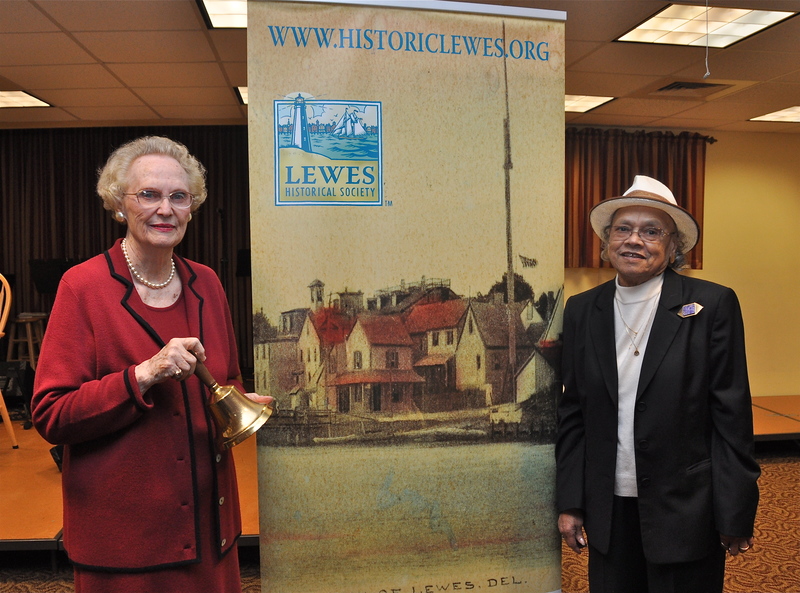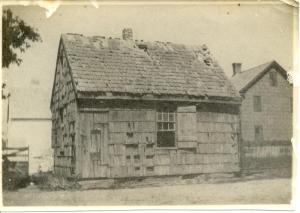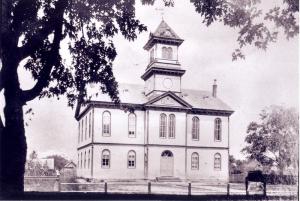Lewes schools date back three centuries
There is no doubt that 1631 marks the date of the first settlement in Lewes. As to when schools opened and education became an important part of the fabric of the community, the answer to that question is a little hazy – even for venerated local historian Hazel Brittingham.
Speaking during an April 15 Lewes Historical Society meeting, Brittingham said the earliest mention of education in Lewes dates back to a brief mention in a book in 1830 that education in the state’s first town could date back as early as the 1660s. There probably was a girls’ school operating in town as early as 1693.
Old samplers, presumably made by students, show two girls’ school operated in Lewes during the 1820s and 1830s: Mrs. Bowers School and Mrs. Thompson’s School. Other private schools were also operating in the 1800s.
Public education was available in the 1760s in a one-room, 20-by-20-foot building known as the Lewes Little Schoolhouse. Four future governors started their education within the walls of the small school on Shipcarpenter Street.
But it would be another 100 years before students would attend 12 years of school in Lewes and graduate as seniors.
First settlers struggle to survive
Brittingham said early, ill-fated Dutch settlers probably had every intention of educating their children but had little luck getting communities established. The first settlement in 1631 lasted only one year; another settlement, in 1663, fared no better.
Destroyed by the British, the later settlement seemed to have some penchant for education, Brittingham said. She said a Bill of Particulars from that early settlement contained information that children would attend school one-half day, to learn the Holy Scriptures and natural sciences, and work at a trade the other half of the day.
She said the earliest settlers were more involved in their very survival than in schooling for their children. A more permanent settlement was established into the 1680s.
Schools spring up in Lewes
Over the early years, schools ended up in places all over Lewes including the current locations of Touch of Italy and Cotton Club on Second Street in downtown Lewes and the Zwaanendael Museum and Beebe Medical Center on Savannah Road.
The old Negro School in Lewes has been converted into a home in Shipcarpenter’s Square.
During the early 1700s, Brittingham said, there were no public schools in the county. A few private schools were available, but most children were educated at home or simply received no schooling.
The Lewes Little Schoolhouse provided children with a public education from 1761 to around 1875. Four students attended the small school and went on to become governors: David Hall (1802-1805); Daniel Rodney (1814-1817); Caleb Rodney (1822-1823); and Joseph Maull (1846). The desk of its schoolmaster is part of the historical society’s collection, said Mike DiPaolo, executive director.
The Lewes Academy operated from 1795 into the 1800s at the site of the current Zwannendael Museum. It was demolished in 1921.
In 1875 under the New School Law, four one-room schools in and around Lewes were closed and consolidated into the Lewes Union School in 1876 near the present-day emergency room at what is now Beebe Medical Center. There were no provisions for black students in the law; those who attended school went to one-room schools. The first public school class from Lewes graduated in 1879.
Another education law in 1919 created the Lewes special school district and paved the way for two new schools in the town in 1922.
The school with the most ties to history was built in 1922 along Savannah Road with $200,000 from the Pierre S. duPont Foundation and $50,000 from Lewes residents. Lewes School has been home to all grades, high school from 1969 to 1976, junior high, ninth-grade campus, Sussex Consortium classrooms, a preschool, district offices and the Academy of Lifelong Learning.
In 1932 an elementary school wing was added; a gym, cafeteria ag building and high school wing was added in 1951.
Shields Elementary School was added across the street in 1967 because of growing student population.
The DuPont Avenue School, with three classrooms, opened in 1922 for black students with assistance from duPont funding. It is named in memory of Frederick Douglass Thomas.
After state-mandated consolidation was imposed in 1969, voters in Lewes, Milton and Rehoboth Beach passed a referendum to construct a new high school in Lewes along Kings Highway. That high school, opened in 1976, was torn down to make way for the opening of the new high school in 2009.
Education for black students
For more than 200 years, Lewes schools, like most others in the nation, were segregated. Most African American students attended one-room county schoolhouses scattered throughout Sussex County, including one in Belltown and one at Rabbit’s Ferry.
Hilda Norwood not only attended the one-room schools, but went on to become a teacher at Rabbit’s Ferry. She retired from Cape Henlopen School District after 44 years of teaching.
Norwood said students gained a good education at the schools in spite of limitations like no running water, no indoor plumbing and no electricity with heat supplied by a coal stove. She said it wasn’t until the 1950s that the school got electricity thanks to the efforts of its PTA.
Norwood said she and her three older sisters had to walk three miles to attend Rabbit’s Ferry School, but they never minded the walk. A bus with white students bound for Hollymount School would pass them everyday.
Rabbit’s Ferry offered students an education from the first through eighth grades. Beyond that, students could attend the school for black students on DuPont Avenue in Lewes, now the Sussex Consortium.
Norwood said two of her sisters received state-funded transportation to the school, but she and another sister were on their own. A neighbor, Ruth Morris, who worked at the nearby white school, drove Norwood to school each day. “I’ve often thought about this situation,” Norwood said. “If she was embarrassed at that time by transporting me, a black, I never felt it. She was always very kind.”
During this time, prior to the 1950s, black students had two options for higher education: Delaware State College for Colored Students in Dover and Howard High School in Wilmington. All four of the Norwood sisters attended Delaware State and went on to other colleges to obtain several degrees.
After eight years, Norwood returned to teach at Rabbit’s Ferry and continued until the school was closed in 1965.
William C. Jason Comprehensive High School, the first Sussex County high school for black students, operated from 1950 to 1967; it’s now the home of Delaware Technical and Community College. By 1953, the school offered education to students in grades 7-12.
Portland school tied to Lewes family
Four educators in the mid-1800s with ties to Lewes helped establish one of the most prestigious girls schools on the Pacific Coast – St. Helen’s Hall in Portland, Ore. The family –Bishop Benjamin Morris and his sisters-in-law, Mary, Lydia and Clementine Rodney – operated a girls’ school in the old Rodney house at the corner of Second and South streets in Lewes.
When the bishop was named Episcopal missionary bishop to Oregon, the transcontinental railroad was not yet completed so the family had to endure the arduous trip by ship to the other side of the country.
They traveled by ship to Panama, disembarked and traveled by train from the Atlantic to the Pacific coast, boarded another ship and sailed to Portland. Their belongings arrived several weeks later on their original ship, which had to traverse around the southern tip of South America.
St. Helen’s Hall, named after nearby Mount St. Helens, opened its doors Sept. 6, 1869, not long after they arrived in Portland. Under leadership of the bishop, Mary served as principal, Lydia as assistant principal and Clementine as music teacher.
The school, now merged with a boys’ school, has moved several times from its original location, but it remains open today.
A bell, brought from Lewes by the Rodneys, is rung to start each school year.






















































